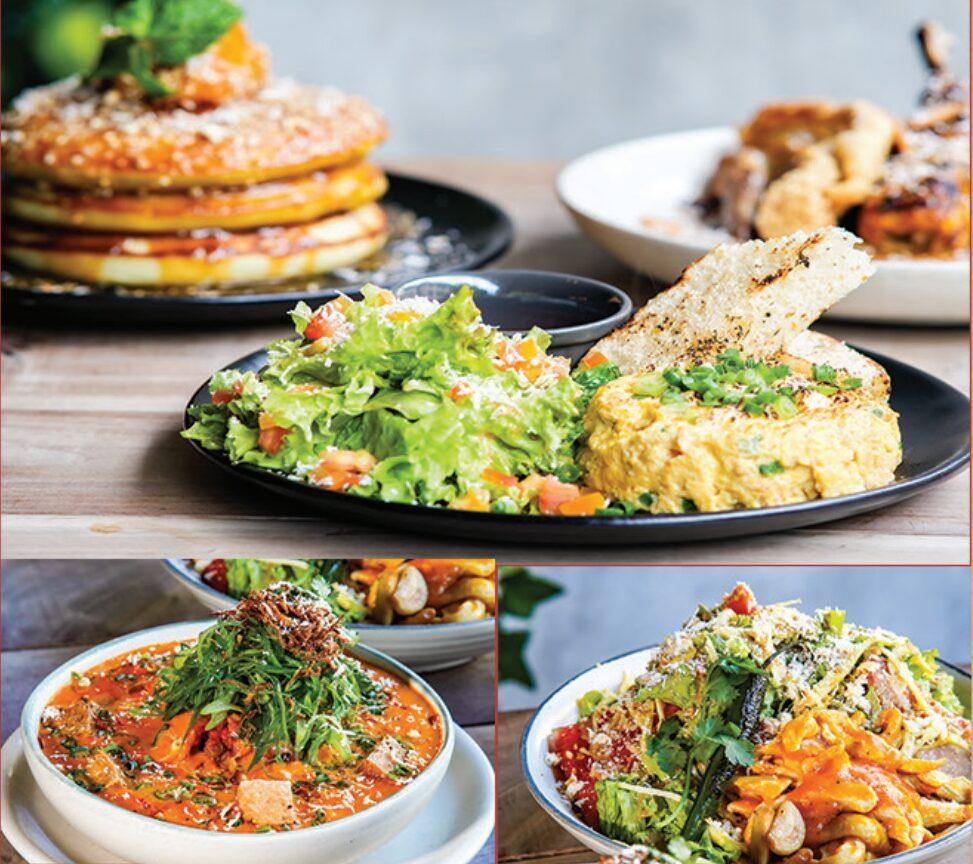In kitchens across the Philippines, from bustling Manila markets to quiet provincial homes, a culinary renaissance is underway. It’s not about trendy superfoods or Instagram-worthy presentations. Instead, Filipinos are rediscovering the wellness wisdom woven into their culinary heritage—a philosophy that views food as a holistic path to well-being. THE HEALING POT Filipino cuisine blurs the line between food and pharmacy. Many traditional dishes are prepared not just for their flavor, but for their perceived healing properties. Sinigang, the country’s beloved sour soup, is a prime example. This tamarind-based broth is a go-to remedy for colds and flu, believed to clear sinuses and boost immunity. Tinola, a ginger-infused chicken soup, is traditionally served to new mothers during their postpartum recovery.

The ginger is thought to promote healing and restore energy, showcasing how Filipinos have long understood the importance of nutrition in recovery. But the list of healing dishes doesn’t end there. Arroz caldo, a comforting rice porridge, is often prepared for those recovering from illness, its easy-to-digest consistency and warming properties making it a natural choice for convalescence. Mongo guisado, a mung bean stew, is rich in protein and fiber, and is believed to aid in detoxification and improve circulation. For digestive issues, Filipinos turn to dishes like pinakbet, a vegetable medley that includes bitter melon, known locally as ampalaya. This bitter vegetable is thought to help regulate blood sugar and improve gut health. Even desserts play a role in wellness: champorado, a chocolate rice porridge, is often fortified with malunggay (moringa) leaves, adding a nutritional boost to this comforting treat.


BALANCE IN A BOWL
Beyond single-ingredient remedies, Filipino wellness cuisine emphasizes balance—a concept nutritionists are only now fully appreciating. The traditional Filipino meal structure, with its array of dishes served family-style, allows diners to intuitively create their own equilibrium of flavors and nutrients. A typical Filipino meal might include a soup (like sinigang), a grilled or fried protein (such as inihaw na isda or crispy pata), a vegetable dish (perhaps pinakbet or chopsuey), and always a serving of rice. This diverse spread ensures a mix of textures, flavors, and nutrients. The sourness of sinigang might be balanced by the richness of crispy pata, while the bitterness of ampalaya in pinakbet is offset by the sweetness of corn in the chopsuey. This approach contrasts sharply with Western obsessions over counting macros or adhering to strict dietary rules. Instead, it encourages mindful eating, allowing diners to listen to their bodies and create a plate that satisfies both nutritional needs and personal cravings. The result is a meal that nourishes not just the body, but also the soul, fostering a healthier relationship with food. What sets Filipino food-as-medicine apart is its spiritual dimension. Many families still begin meals with a prayer, a practice that aligns with modern concepts of mindful eating. This moment of gratitude and reflection before meals can be seen as a form of mealtime meditation, potentially aiding digestion and fostering a deeper connection with food. Even ingredients carry spiritual weight. Coconut, ubiquitous in Filipino cooking, is also central to many rituals and ceremonies. Its use in daily meals creates a unique synergy between nourishment and cultural identity.

COMMUNITY ON A PLATE
Perhaps the most powerful wellness aspect of Filipino cuisine is its emphasis on communal dining. In an age where loneliness is considered a health epidemic, the Filipino practice of sharing meals takes on new significance. These shared experiences foster social connections and emotional well-being, aligning with recent research highlighting the importance of community in maintaining good health.
GLOBAL RECIPE FOR WELLNESS
As the world grapples with diet-related health issues, Filipino cuisine offers valuable lessons in the interconnectedness of food, spirituality, and healing. Wellness retreats featuring Filipino healing foods are emerging globally, and high-end restaurants are beginning to offer Filipino-inspired “wellness tasting menus.” The core principles of Filipino culinary wellness— balance, mindfulness, and community—offer a holistic approach to nourishment that addresses physical, spiritual, and emotional needs. As we continue to explore the connections between diet and health, the wisdom embedded in Filipino culinary traditions may well provide valuable insights for a more balanced and wholesome approach to eating and living. In essence, Filipino cuisine reminds us that true wellness isn’t found in a pill or a powder, but in a humble bowl of soup, lovingly prepared and joyfully shared. It’s a testament to the power of good food, made with intention, and enjoyed in good company—a simple yet profound recipe for health and happiness.







